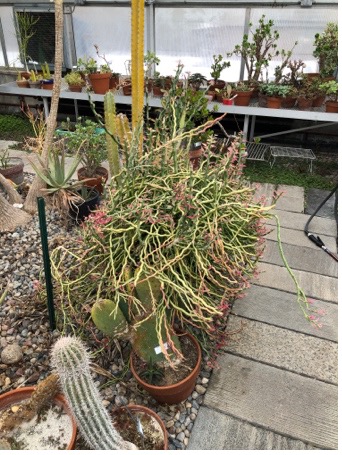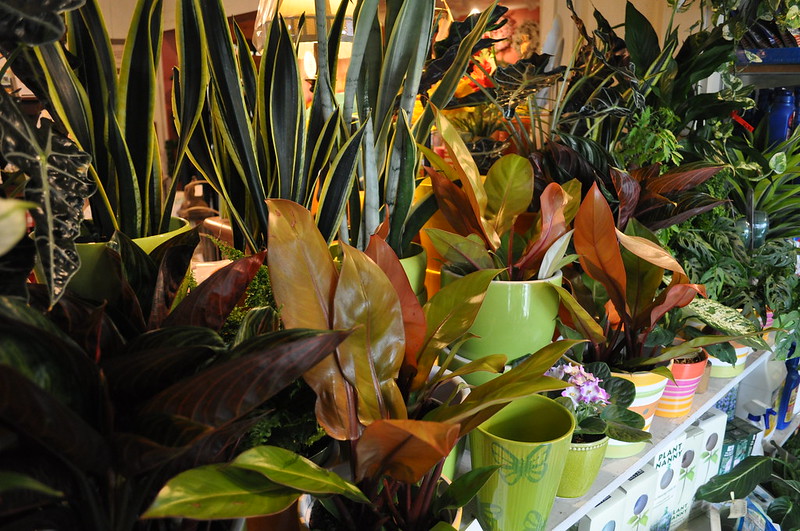By Salvador Rodriguez, Alliance for Sustainability Intern and Plant Advisor
There you go again; you find what you think is the plant. You bring it home only to be disappointed over the next few weeks when you discover it’s not thriving. You may find yourself in this situation purchase after purchase. It can be discouraging. You may not want to purchase another plant again, convincing yourself that you don’t have a green thumb or that plants are simply not for you. You are far from alone; you are like most individuals who confuse a lack of experience with a lack of “talent”. The beautiful truth is that anyone can nurture a plant, so don’t sell yourself short.
Overcoming Challenges
It may not be you at all. Your plants may be unsuccessful for any number of reasons: Incorrect lighting, inadequate temperature and humidity or previous exposures to pathogens (fungal and bacterial diseases).
It’s alright to have not been successful with previous plants. Plant care is a skill that requires practice and patience. Purchasing a plant may be an impulsive decision, or you may just want it for aesthetic purposes. The unfortunate truth is that you can’t expect all plant species to thrive in the environment you have to offer. Many species simply need more humidity than your home can offer. Some plant species may look enticing; however, it may be impossible for it to thrive in your home. Some ugly truths may be faced in this process, such as “You can’t have that plant.”
What Does a Plant Need?


When you consider purchasing a house plant, think of where this plant would live outside the store. If you live in Minnesota and you’ve brought home a succulent, you can’t expect it to adapt to set conditions without any accommodations. That succulent most likely evolved in an arid environment, meaning it needs to live in the same set of conditions: Warmth, direct sunlight, relatively lower humidity, rocky soil, etc.
All these conditions are variable by species, meaning it is the consumer’s responsibility to know a plant’s living requirements. These questions can most likely be answered at a plant nursery.
Do Some Minimal Research
Your hope is to make your plants thrive, especially since you may have spent a lot of money on them. Without the need to repeatedly replace dying plants, you are sparing yourself from further disappointments. The joy of plant care is to watch a plant grow and develop through all of its life stages. Think of it as seeing time through another life form, it can be beautiful.
Before purchasing a plant, do some simple research on the plant’s care. Knowing this information before owning a plant will give you a greater chance at success. Understanding simple care such as how often and how much to water, proper humidity and temperature are essential to your plant’s health. The key to all these things is preparation, having this knowledge before making the purchase.
Much of this knowledge is available for free on the internet. Gardening is a popular hobby that people share about online, so finding your answers shouldn’t be difficult. Simple searches could be essential for the care of your plant. Know the plant species’ natural habitat, how often and how much you should water, and what kind of soil mixture before making a purchase.
Plant care is a combination of experience, knowledge, and patience. One important thing to understand is that plant growth is typically not what people expect. Depending on the species, many experience stages of life such as “dormancy” in which growth is paused through the colder seasons. Plants are more complicated than you may think. Don’t expect visible results in the span of weeks. Succulent species, for example, are typically slower in growth. Taking years to fully mature, a succulent may become uninteresting without understanding this before owning the plant.
Don’t Give Up!
Social media platforms have allowed people to create groups on topics like plant care. If you are active on Facebook, Instagram, and Twitter, you can most likely find plant specialists. Many knowledgeable people have readily available resources for you to access. For example, PLANTERINA, Lulu’s Leaves, and Crazy Plant Guy on YouTube are great channels to watch for beginners. These channels offer simple yet insightful advice on various plant care topics.

Melancon Greenhouse

(Saint John’s University, MN) terrestrial plant room.

Between helping my family grow various plants in Texas and being a student worker at Saint John’s University’s Greenhouse, I have developed a lot of experience with plants. My focus in plant care has mainly been terrestrial plants, such as cactus species and arid palms. I found myself becoming skilled in plant care after failing several times. I have overwatered one too many succulents, dried out luscious foliage species, and failed several seasons of growing foods. Take the time to learn and ask questions, and more importantly, experience. After taking the steps to prepare for a houseplant, you will feel much more confident.

